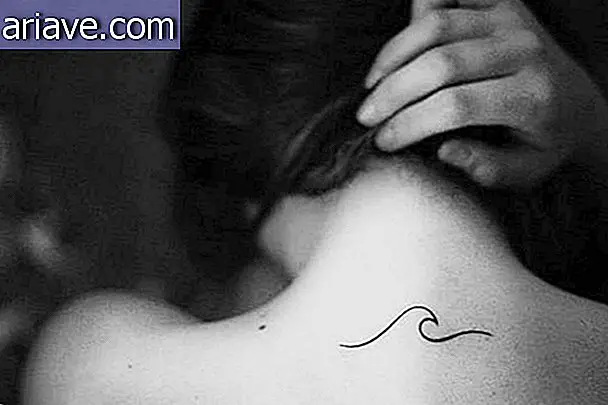9 wild ways to slay a dragon, according to mythology
What would you do if you found a dragon in front of you? And we are not talking metaphorically about that hideous person who comes to sing you in the ballad: we talk about dragons of "truth", those who set fire, have wings and are gigantic.
Would you give Bilbo Baggins one and a lip in her pussy like in "The Hobbit"? Or would you try to tame it and fly around like Hiccup did with Toothbrush in "How to Train Your Dragon"? Or would he face the steaming winged beast in an attempt to rescue the princess, as Shrek did in his first movie?
Joking aside, dragons do actually appear in various mythological tales around the world. They are not usually very nice animals, and a brave warrior must face them to death. Check out 9 ways to kill a dragon according to these stories.
1. Poisoned Cake
In the Old Testament of the Bible, the book of Daniel shows that he and his people worshiped a dragon god. Asked by the king of Babylon, Daniel went to prove that such a dragon had nothing divine - he would be very deadly.
But no war, spears, or battles: Daniel made a mind-blowing plan to kill the poisoned dragon. He cooked a cake that had tar, grease and strands of hair - the monster ate it all without hesitation and flipped over shortly thereafter. The Babylonian people, of course, did not like the fact that Daniel killed his god and locked him in a lion's den.
The breathtaking story, however, cannot be found in any Bible. Because it is considered an apocryphal text, only a few Greek translations of the holy book maintain the passages that speak of the dragon.

2. Dagger
This story comes from Japan: According to a legend of her folklore, the young Tokoyo killed the dreaded dragon Yofune-nushi using only a dagger. She found the creature while looking for her missing father.
Yofune-nushi was a sea dragon that collected fishermen's tributes: annually, a young woman had to be sacrificed to spare the other villagers from great storms. On encountering the dragon, Tokoyo offered himself as that year's offering and was taken to his cave.
There she found a statue of Hojo Takatoki, the man who had arrested her father. Trying to retrieve the artifact, Tokoyo had to face the dragon and managed to strike him first in the right eye and then in the heart. The young woman returned to the village carrying the statue and found the real Hojo, who had healed from a disease that was linked to the dragon's life and the sculpture itself. In gratitude, he released Tokoyo's father and everyone lived happily ever after.

3. Intense brightness
Fashion sense is something that men don't usually have. So when Gerolde went out to try to become a dragon slayer, some people commented that his armor was very bright. The story is part of British folklore and shows how luck can be in favor of the less fashionable.
Upon meeting the monster, a ray of light reflected from Gerolde's sleek armor and temporarily blinded the creature. It was enough for the brave hero to slay him with a spear and become a legend in his village that gifted him with all sorts of pampering - including a coat that Gerolde wore over his armor when facing his second dragon.
However, without the "bright" advantage of the first fight, the brave warrior was reduced to ashes by the dragon, with no time to slap at all. Poor Gerolde, he barely had time to fame.

4. Golden Girdle
One of the most famous dragons of mankind is the one killed by St. George. But do you know the whole story? Legend has it that the Roman soldier found a damsel in distress and fought the monster to rescue her. By striking the dragon with a spear, St. George would have turned toward the princess.
But the animal was still alive, and St. George managed to tame it by putting its golden belt around his neck. He returned with the maiden and the monster to the village and explained that if everyone converted to Christianity, he would kill the dragon. As everyone agreed, St. George annihilated the creature.

5. Armor hole
In Denmark, there is also a legend involving these creatures. The tale says that King Frotho I overheard a peasant singing a song that spoke of a dragon that lived on a remote island and kept a huge fortune in gold in his possession. Immediately, the king went after the monster to try to kill him and take the treasure for himself.
When meeting with the dragon, Frotho tried to hit him with a spear, but a "armor" made of gold covered almost all his abdomen, making it difficult to annihilate. Only a small piece of his chest was exposed, and it was then that the king noticed that he needed to hit the beast in that hole to beat it. No sooner said than done! The king managed to finish off the dragon and inherit his treasure.
The story sounds familiar, doesn't it? In The Hobbit, the dragon Smaug has the same description and was killed the same way. It turns out that author JRR Tolkien relied on this legend to create his cruel dragon.

6. Bait
In Austria, legend has it that the fearsome dragon Lindwurm came to inhabit the outskirts of Klagenfurt. Those who dared to enter their "lands" were torn apart. Tired of so many tragedies, a king sent a group of soldiers to kill the beast.
The warriors enveloped a bull with barbed wire and hid it within the dragon's den. When she saw the banquet ready to be devoured, Lindwurm did not think twice and took the bait. Only then did he realize that he had fallen into a trap and was killed by the soldiers, who ripped his head off and exposed his skull in the town hall.
Even after discovering that the skull actually belonged to a rhino, the Austrians continued to cultivate the legend. So much so that in 1582 they erected a massive statue in a town square as a reminder of the fearsome creature.

7. Flute and dance
It is said that the Hindu deity Krishna was once walking around when he encountered the dragon Kaliya, which had several heads. The monster was poisoning the waters and lands of the region and Krishna decided to kill him. To this end, the Indian deity transformed the river where Kaliya lived into a huge hot tub.
Many would enjoy it, but the multi-headed dragon became very angry and began to attack Krishna. The deity was far more powerful than Kaliya could imagine, and even fire, water, or his jaw were no match for the power of the Hindu god. Out of the water, Krishna jumped over one of the dragon's heads and began a dance ritual while chanting his flute.
From jumping over one of the dragon's pipes, she was crushed. Krishna then jumped to another head and repeated the process until it was close to detonating the monster completely. However, something unexpected happened: the dragon's wife Kaliya appeared and begged for mercy on Krishna, who gave up on annihilating the dragon and only banished him from his lands.

8. Water to put out the fire
According to Polish tradition, a man named Krakus was responsible for founding the city of Krakow and building Wawel Castle. And not only that: he would have killed a dragon too!
The legend is set in the 11th century, when the terrible dragon Smok lived on Wawel Hill and tormented the locals. He ate oxen, sheep and little children, and set fire to those who got in his way. Krakus devised a marvelous plan to end the threat: he made a secret mix, bathed a sheep with it and placed it near Smok's lair.
The dragon, of course, delighted in the free banquet. However, the mix of Krakus made Smok feel a thirst! He stalked out of his hiding place and began to drink water from a nearby river. The poor guy drank so much water that it exploded! Krakus was considered a hero and after that founded the city and built the castle.

9. Turning to stone
Greek mythology is one of the most beloved and known in the world. In it, the sea dragon Cetus was sent by Poseidon to destroy Queen Cassiopeia, who had the unfortunate idea that her daughter Andromeda was the most beautiful creature in the universe. This offended the Nereid nymphs, who demanded punishment against the lingaruda queen.
Cetus attacked the country of Cassiopeia, which resorted to the oracle of Amon to learn what it needed to do to defeat the monster. The death of daughter Andromeda as a sacrifice for blasphemy would be the only solution, so much so that the queen and her husband Cepheus chained her naked on a cliff by the sea.
Mounted on his horse Pegasus, Perseus spotted bound Andromeda and was enchanted by the princess. Upon discovering the oracle's prophecy, the hero offered to slay the dragon Cetus in exchange for becoming Andromeda's husband. Perseus flew around the monster, removed Medusa's head from a backpack, and turned the dragon to stone, sinking it into the sea. Soon after, he married Andromeda.

***
* Originally Posted on 09/04/2015











